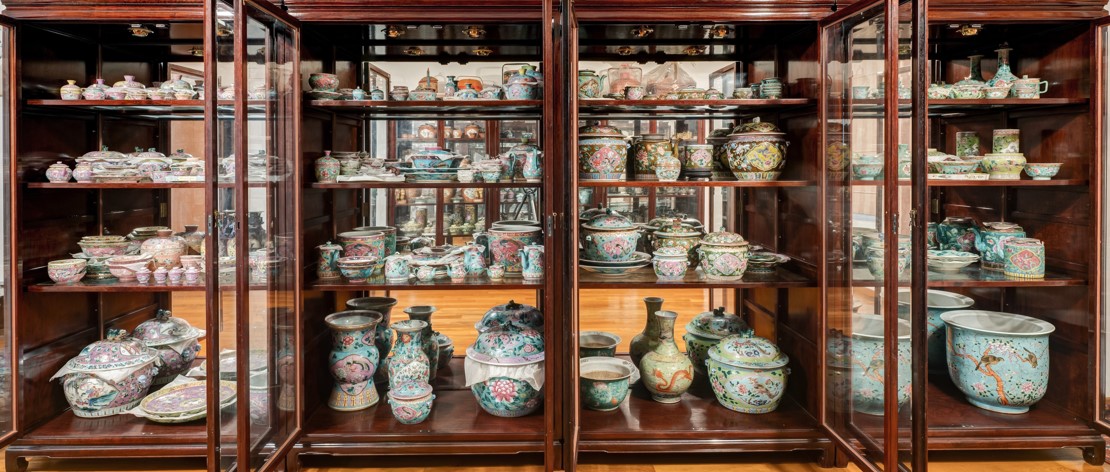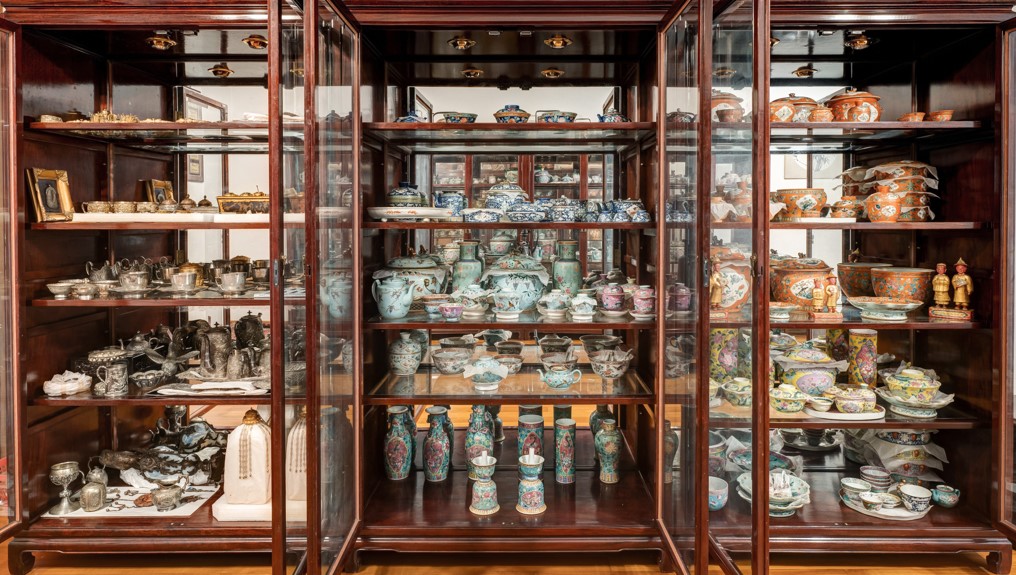|
Mrs Alice Tan began collecting Straits Chinese ceramics and Chinese export silver in 1992, in her 60s. Her expansive 577-piece collection, featuring auspicious motifs such as the butterfly, peony, and phoenix, now supplements the Straits Chinese collections at NUS Museum and NUS Baba House.
Comprising 438 Straits Chinese ceramics (including rare wares in decorative yellow or dark blue enamel), and 139 pieces of Chinese export silver, the items help inform, enrich and broaden visitor understanding of the variety of historic Peranakan wares in existence.
Beyond shedding light on the habits of Peranakan Chinese families in domestic settings, via items like bowls, tingkats (tiered food containers), vases, and kamchengs (covered containers for storing boiled water or soups), the wares in Mrs Tan’s collection serve as tangible vessels and representations of the history of Chinese ceramic manufacturing. For instance, they reflect market demand for unique Straits Chinese products from as far back as the 18th century. In pristine condition, some of these pieces were used during celebratory occasions such as weddings.
They also serve an important role in encouraging education and research on the production and consumption patterns of export ceramics in global history, as well as the role of Southeast Asian actors, such as clients, patrons and collectors in challenging Chinese manufacturers to create wares distinct and unique for Southeast Asian markets. There is also ample room for the study of patterns of collection, such as the trajectory undertaken by collectors as they assemble their own catalogues via an assortment of networks and sources like auction houses and antique dealers within the region and beyond.
Export porcelain pieces from Mrs Tan’s collection will likely be displayed within the vicinity of NUS Museum’s Archaeology Library as well as the ceramics display at the museum’s Lee Kong Chian gallery.


Chan Siew Kim, Mrs Alice Tan's Straits Chinese collection.
|